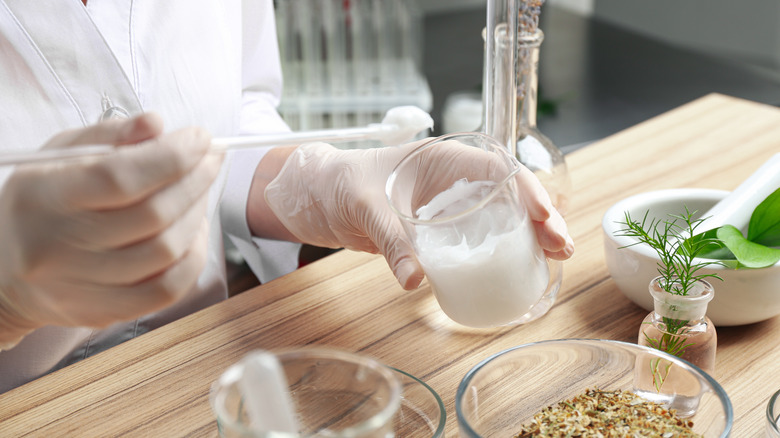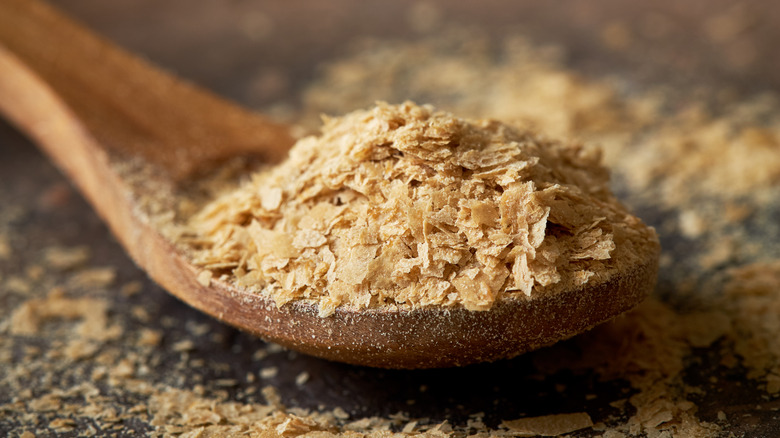Scientists Have Created Food Using Only Water And Electricity. Here's How
The future of inexpensive, sustainable food could be on the horizon with a groundbreaking discovery that could change the culinary world as we know it. According to Smithsonian Magazine, scientists at the VTT Technical Research Centre of Finland and the Lappeenranta University of Technology have come one step closer to pulling food out of thin air, utilizing just water, bacteria, and electricity to create a new form of edible protein.
The project, which was part of a larger initiative by the Finnish government to fund innovative research for reducing carbon emissions, was successful — producing small amounts of a nutrient dense powder that could be the first step to a more sustainable food product.
The protein-packed powder has a texture and taste reminiscent of dry yeast and can be used in its pure form or to make more forms of protein. In addition to being nutrient packed, researchers estimate that the energy required to create the protein could be less than photosynthesis requires to produce an equal amount of food.
The scientists behind the innovation hope their discovery will lead to a new form of meat substitute — in the footsteps of Quorn, which is made from a fermented fungal protein — that will be cheap enough to provide a food source for those experiencing starvation and famine around the globe.
How is this unique substance made, and what could be the uses?
To create the new form of protein, the team started with a single-celled hydrogen-oxidizing bacteria, which relies on hydrogen as an energy source. That bacteria are placed in a bioreactor with an electric water splitter and water. The water is split into hydrogen and oxygen, and the bacteria then feeds on the hydrogen. Eventually, with the addition of trace amounts of ammonia, inorganic salts, and phosphorous, a dry bacteria powder is the final result. The nutritional makeup of the resulting powder is 50% proteins, 25% fats and nucleic acids, and 25% carbohydrates, proving it a nutritious substance for human and animal consumption.
Although this process certainly sounds complicated, Juha-Pekka Pitkänen, a senior scientist at VTT, says their process is "not so much different than making beer, but in making beer of course you use sugar as the raw material but in this case we use hydrogen" (via Smithsonian Magazine). The new technology, which takes two weeks to produce a single gram of powder, has the potential of being a highly sustainable food source for the future — if it can be scaled up in a major way. Researchers say that with time and funding, they may be able to produce larger amounts of the protein source by utilizing different energy levels and new reactors.
While this protein could have the potential to be turned into meat alternatives for humans — many of whom may be weary of snacking on a bacteria-based protein source — one of the most effective uses could come in the form of livestock feed. If produced in large amounts, the protein could be used to feed herds of livestock, which would free up land to plant trees or grow food. Not to mention, this protein would be exceedingly cheap for farmers and food manufacturers alike — after all, ingredients don't get more affordable than water.

